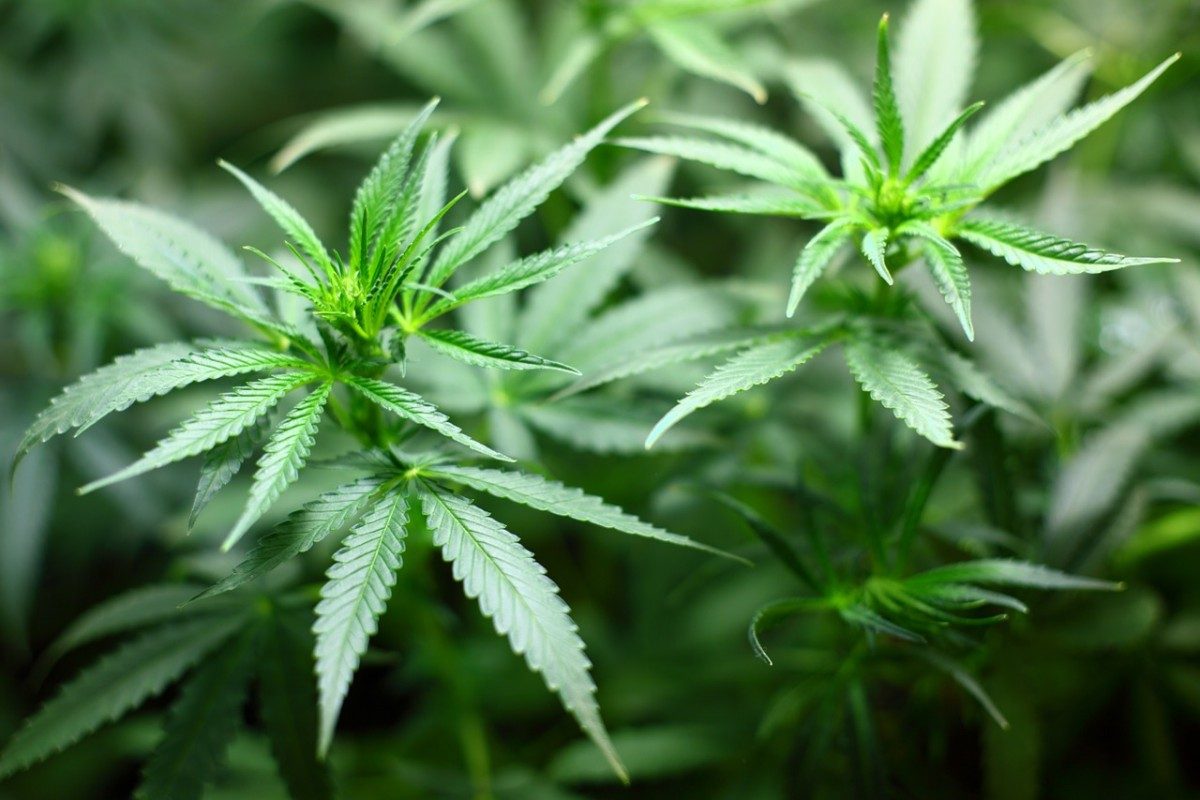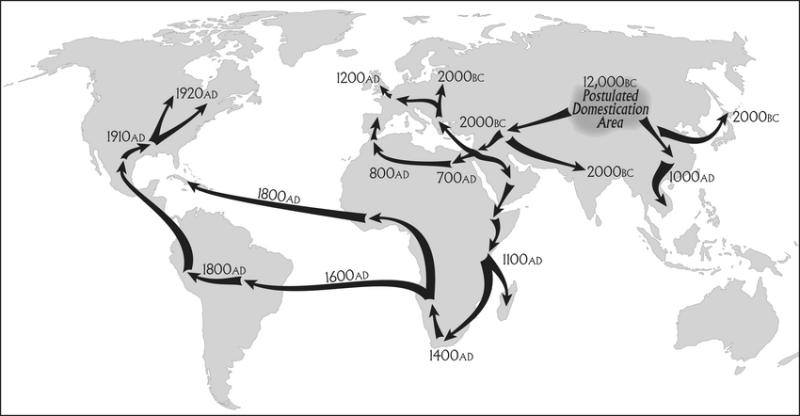
The one and only Cannabis sativa
Unraveling cannabis’ genetic history and debunking marketing myths
A Q&A with a biologist who sequenced its genome
Enzymes are a lively bunch. These proteins dash around cells to hurry along the millions of chemical reactions life needs to exist. Within cannabis plants, one particular enzyme – a polyketide synthase – transforms the herb into a medically valuable and psychedelic shrub. We know this because Jake Stout, a biologist in the Faculty of Science, helped identify this biochemical pathway, and was a member of the group of scientists who first published the plant’s genome (the complete sequence of DNA in the plant).
Stout’s fundamental research interest is in how plants make molecules, like how cannabis makes cannabinoids. Many of these chemicals interact with protein receptors the human body possesses. A cannabis plant makes no fewer than 113 cannabinoids but the four main ones go by the acronyms THC, the psychoactive one (alongside THCV, a variant); CBD, an anti-inflammatory that relieves pain and helps quell seizures in epileptics; CBC, which may turn out to stimulate bone growth and also act as an anti-inflammatory; and CBG, of which little is yet known.
Cannabis likely makes these molecules to defend itself from hungry insects and bacterial diseases, similar to nicotine in the tobacco plant, or caffeine in coffee and tea. But that is just a hypothesis, although one with considerable merit since most of cannabinoids are produced in the plant’s flower, making one assume it is trying to protect its future generations.
Although Stout finds the ecology of these molecules fascinating, he’s more interested in finding the genes that encode the enzymes that make plants like cannabis or Madagascar periwinkle valuable to us.
UM Today sat down with Stout to ask him about his research, and how, as someone who knows a lot about cannabis’ genetics, he views the marketing buzz surrounding marijuana. Some terms may be new to readers, mainly “indica” and “sativa”. It’s commonly accepted that these terms define the two major classes of marijuana. Indica plants are shorter and have smaller leaves, and it’s commonly believed that the chemicals they produce, when ingested, make users feel relaxed throughout the body. Conversely, it’s said the larger sativa plant energizes the brain and stimulates creativity of the person who takes it. The truth is less straightforward.
UM Today: Cannabis is now legal in Canada, which surely means researchers can now poke and prod it with less bureaucratic handcuffs on them. But you got in there early and mapped some key parts. Considering the history of this plant, getting into it must have been like trying to unravel a closet full of yarn that has been neglected for decades. How tanged of a mess was it?
Jake Stout: A lot of the breeding—especially on the marijuana side—was done by underground breeders. We don’t know where the plants they used came from, what crosses they did to get to the lines that are grown now, like “purple kush” and “haze”. So a lot of the oral history you can’t rely on. In the paper we published in PLOS1—we analyzed which cannabis plants are related to see if there is any truth to the “indica” and “sativa” grouping. And there once was a separation of these groupings, but modern marijuana lines are all mostly hybrids. And what the companies say they are, are often completely wrong: ‘This is a pure sativa,” and it’s got nothing but an indica background.
Are indica and sativa different genetically?
They are different genetically, but we still consider them to be the same species.
So when marketers say indica provides a “body stone” and sativa is more of a “cerebral high”, is there any truth to this?
That’s probably bunk. I think there’s a good amount of placebo effects taking place, but I’d say it’s possible there is something to the indica background that does make you want to just sit on a couch and eat cookies.
I think it helps to know a bit about the providence of this plant. Cannabis is one of the first domesticated plants, going back to 12,000 BC. It came from Central Asia and it was used mostly, probably, for seed because seeds are a good food source, and then they probably realized you could use it for fibre to make clothes, rope, and paper—a lot of ancient Chinese paper is cannabis based.
It’s kind of like dogs. We domesticated dogs and now we have a bunch of variations of modern dogs but we really began with two or three domestications of dogs from wolves. So we have all these different types and bred them to do different things—work dogs, lap dogs. It’s kind of the same thing for cannabis. But the difference is we were growing cannabis and some populations went feral—they escaped cultivation.
People began trading its seeds down into India and some plants escaped cultivation and started adapting to the local area, so they got a little short, squat “indica-like” characteristics. There was some genetic selection, so it was still Cannabis sativa but we now call it a subspecies indica. Then more hemp varieties got passed around and around at least around 3,000 BCE, probably longer ago than that, people realized there’s some psychoactive components. We know that because tombs of shamans have been found with high THC varieties buried with the shaman.
We have known about THC for ages. So for thousands of years we have been breeding some lines to make hemp, and some lines for these religious practices, which eventually carried over into recreational use. But hemp is still Cannabis sativa, but it’s just used for seed or fibre, and we bred other lines with high cannabinoid content which we now call marijuana or medical cannabis, but they are all the same plant. They are all Cannabis sativa.
So if you’re going into a shop and you’re hearing this stuff about pure indica or sativa strains, I’d caution you to note that there has been so much breeding that they are mostly hybrids. I’d tell people to just try stuff and go with what you like. I imagine it’s like wine. They will have different profiles but generally do the same thing.
So the different supposed effects they offer, is that all hogwash?
There’s going to be some marketing hogwash but there’s also something to it. No one has done an experiment where you take a bunch of people with, say multiple sclerosis, and give them a bunch of different types of marijuana and measure the effects. It simply hasn’t been legal to do these kinds of experiments until now. But anecdotally, people say different strains affect them differently, and there is enough of that to make me think there is probably something to it.
However, it’s rather more complex. The effects are likely caused by the ratios of cannabinoids and terpenes (the compounds that give marijuana it’s distinct odour and which are also medicinal). These can interact with each other and change how they interact with you, giving what we call the cohort effect. So it’s not just one or two molecules that are at work. If you take a pill, it’s one molecule that is interacting with you. If you’re taking marijuana, it’s thousands. So differences in the ratios between all of those might affect how a person perceives what is going on.
The flip side is people are different. The receptors that these molecules interact with, some people have more of them than others, and there are genetic variations of these receptors out there in the human population. So there’s the human genetics and physiology differences, and the differences of this complex plant coming together.
Tell us more about our receptors.
We make our own cannabinoids, which are called endocannabinoids. It’s kind of cool. A lot of the early history of pharmacology is based upon us figuring out how natural products such as morphine, caffeine, and cannabis interacts with receptors that humans have. After identifying these receptors, we then found out what their real jobs are in our normal biochemistry and physiology.
The endocannabinoid system is the main system we have to turn down hyper nerve signalling—when a nerve is firing too much. The way it works is a neuron is firing to another neuron but if one is over-firing, the other one produces endocannabinoids, which are fatty acid derivatives. They get produced by the hyper-stimulated neuron and then they then interact with the endocannabinoid receptor on the other neuron telling it, “Hey, cool it. Pump the brakes.” THC binds to the same receptor and also says, “Pump the brakes.” So THC is just slowing down nerve signalling, which can produce pleasurable effects but also does other things like reduce pain signalling. And the nice thing about it is that it doesn’t slow down nerve signalling in parts of our brain that control breathing or other vital functions, whereas opioids do. That’s why when you overdose on opioids you stop breathing—it slows down the area of the brain that controls breathing too much. Naturally occurring cannabinoids don’t do that.
Are you finished studying cannabis now?
Yeah, pretty much. When we started to look into the pathway there were maybe two enzymes that were known and we filled in all the gaps. So as far as nailing the biochemistry of how cannabis makes those four major cannabinoids, we got that done and then did the first genome because it’s a cool thing to do, but it’s also a really good resource for people who are interested in hemp lines and how they make different fibre types. It’s all the same plant so people could use our genome to study other aspects of the biology of cannabis. I’ve been working with the same scientists to publish a second version of the genome that’s much more complete and useful, and that paper should be out by December. But now I’m pretty much onto the next thing and looking at different plants now.
Of the plants you study, is cannabis even interesting or is it doing rather mundane things?
I still like cannabis but in terms of biochemical pathways, the cannabinoid pathway is really short and simple. There’s this other pathway that I’m now studying called the monoterpene indole alkaloid pathway. I’m really interested in this. Another medicinal plant, the Madagascar periwinkle produces commonly used chemotherapy drugs through this pathway. I’m also looking at a related plant that makes another alkaloid called ibogaine, which may be an effective treatment for opioid use disorder. The pathways that produce these molecules have at least 38 enzymes, so from a biochemistry standpoint they’re way more complicated and interesting than cannabis
Research at the University of Manitoba is partially supported by funding from the Government of Canada Research Support Fund.










It was cool to read a marijuana story that wasn’t written by a stoner or some market analyst. This was a refreshing and intersting take. Maybe legalization brings better cannabis storytelling.
Well done, Jake.